Florence Temko - Origami Note Cards
Here you can read online Florence Temko - Origami Note Cards full text of the book (entire story) in english for free. Download pdf and epub, get meaning, cover and reviews about this ebook. year: 2006, publisher: Tuttle Publishing, genre: Home and family. Description of the work, (preface) as well as reviews are available. Best literature library LitArk.com created for fans of good reading and offers a wide selection of genres:
Romance novel
Science fiction
Adventure
Detective
Science
History
Home and family
Prose
Art
Politics
Computer
Non-fiction
Religion
Business
Children
Humor
Choose a favorite category and find really read worthwhile books. Enjoy immersion in the world of imagination, feel the emotions of the characters or learn something new for yourself, make an fascinating discovery.
- Book:Origami Note Cards
- Author:
- Publisher:Tuttle Publishing
- Genre:
- Year:2006
- Rating:3 / 5
- Favourites:Add to favourites
- Your mark:
Origami Note Cards: summary, description and annotation
We offer to read an annotation, description, summary or preface (depends on what the author of the book "Origami Note Cards" wrote himself). If you haven't found the necessary information about the book — write in the comments, we will try to find it.
Make fun and useful homemade note cards with this easy origami kit.Anyone receiving a note folded up in a mysterious way will get an extra lift of anticipation. Origami Note Cards shows how to fold paper into all kinds of different shapes. Instead of searching for a printed greeting card at a store, you may enjoy spending a few minutes folding a piece of ordinary paper into a very personal origami message. Origami Note Cards Kit is the perfect beginning origami kit for crafting your own distinctive greeting cards and notes. With just a few folds, you can create unforgettable personalized cards that will let the recipient know how much you care. Perfect for birthdays, thank you notes, Christmas, Valentines Day and just about any occasion, these beautiful folded origami note cards will make special surprises for your favorite people. Youll even learn how to make blank books just right for sharing, and origami envelopes perfect for mailing your creations. This kit makes a great origami for kids book and is an easy way learn origami. The folding patterns range from very simple, needing only four or five creases, to more challenging. The origami kit contains:A full-colored 48-page origami book Clear step-by-step instruction and diagrams 15 fun paper folding projects 48, 8 x 8-inch sheets of two-sided origami papers A variety of colors and patternsThis kit gives you a wonderful opportunity to brighten any special-or not so special-day for the important people in your life.Origami projects include: Patriotic Card Mothers Day Card Quickie Note Journal Book Heart Card And many more
Florence Temko: author's other books
Who wrote Origami Note Cards? Find out the surname, the name of the author of the book and a list of all author's works by series.



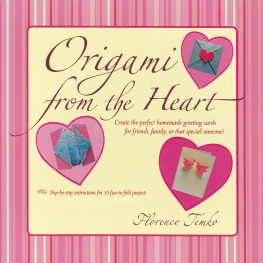

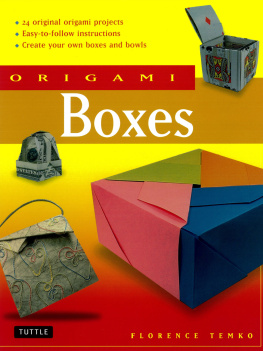
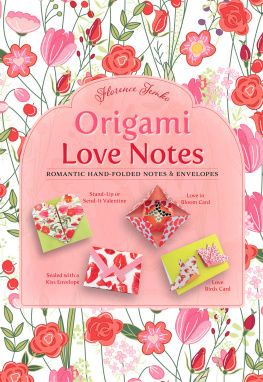
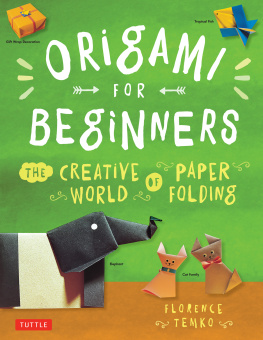


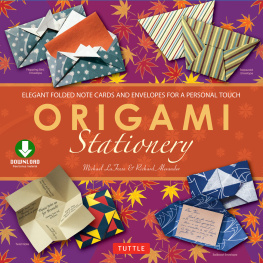
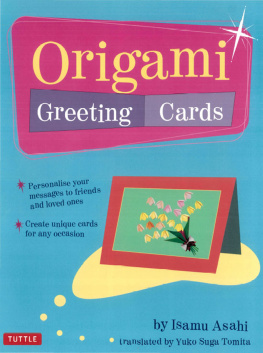
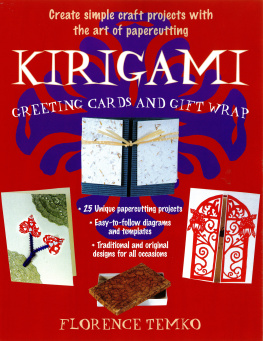
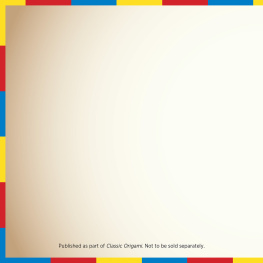
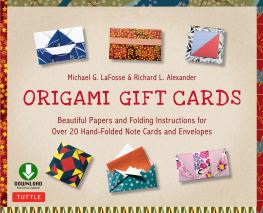
 FLORENCE TEMKO TUTTLE PUBLISHING Tokyo Rutland, Vermont Singapore
FLORENCE TEMKO TUTTLE PUBLISHING Tokyo Rutland, Vermont Singapore PROJECTS
PROJECTS 





 INTRODUCTION Anyone receiving a note folded up in a mysterious way will get an extra lift of anticipation. CONTENTS
INTRODUCTION Anyone receiving a note folded up in a mysterious way will get an extra lift of anticipation. CONTENTS  Traditions of Folded Cards Before envelopes were in common use, messages were written on pieces of paper and folded up. The address was written on the outside. Letter writers aimed to lock the paper in such a way that glue or sealing wax was not required.
Traditions of Folded Cards Before envelopes were in common use, messages were written on pieces of paper and folded up. The address was written on the outside. Letter writers aimed to lock the paper in such a way that glue or sealing wax was not required.